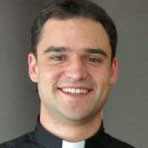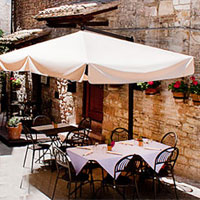The Divine Mercy of our Lord – the feast, the image, and the devotion – is very important to me. It was pivotal to my return to sacramental confession.
Some people, I know, think the Divine Mercy image is kitsch, or worse. Maybe it isn’t great art, but that’s not really the point. Sacred art is not intended to evoke admiration; it is meant to evoke prayer. St Faustina was very distressed by the first portrait of the Divine Mercy, which she considered quite ugly. (It is!) But our Lord assuaged her concerns:
Not in the beauty of the colour, nor of the brush lies the greatness of this image, but in My grace.
In any event, I like the image very much, regardless of respective versions’ artistic merit. One of the ordination presents I most cherish is a large oil on canvas of the Divine Mercy, which was a gift from the Peart family. (Deacon Joel Peart is a serial commenter on this blog.)
Most years it is solemnly blessed on today’s Feast, though not this year. The painting is in Casterton, but my Mass schedule was elsewhere. The image is put to good use. It was originally in my study, but not long after arriving in Casterton, I restored the confessional to it intended use and hung it there:
As you can see, penitents have two options before them. They can kneel at the prie-dieu, and maintain their anonymity, or they can sit face to face with the confessor.
Many people have expressed surprise at this choice, and advised me that the first option was abrogated by Vatican II. (The mythology surrounding that Council is remarkable!) Some of them were not only surprised, but delighted, when I assured them that the screen or curtain is allowed:
Can 964 §2. The conference of bishops is to establish norms regarding the confessional; it is to take care, however, that there are always confessionals with a fixed grate between the penitent and the confessor in an open place so that the faithful who wish to can use them freely.
Personally, I much prefer this option, both as penitent and as confessor. To my mind, this arrangement manifests the supernatural character of the sacrament. You’re not confessing your sins to a priest; you’re confessing them to Jesus. I often explain this rationale to people, so that they don’t think it is “secretive” to choose the screen, and so feel pressured to sit face to face.
I also acknowledge the rationale for the alternative arrangement, as I see it. I avoid value-laden language about “maturity,” because I see nothing “immature” about the screen. But I do appreciate that confession is sometimes an occasion for spiritual direction, which is facilitated by face to face dialogue.
Adults often assume that children prefer the face to face option, and that they are intimidated by confessionals. Wouldn’t an open space be better? I am always sensitive to this, and never presume, but my universal experience thus far is that children prefer the confessional, and the screen.
It’s not about the anonymity. Kids typically stick their head around the curtain and say, “Hi Fr John,” before they start. I can only guess they share my sense that kneeling and confessing without eye contact differentiates the sacrament, so that is more a prayer to God, and less a conversation with a neighbour.
The sacrament of reconciliation is intimidating, especially when you’re out of practice. But it’s also exhilarating. And liberating. I wish it was more widely practiced. And I thank God for the Divine Mercy feast and devotion – not only for its role in my own return to the sacrament, but also the return of so many others. I bet we beneficiaries number in the millions. Deo gratias.







The closest I’ve done to face to face confession is kneeling somewhere without a screen like a sacristy. Most inner city churches seem to favour the screen while suburban churches seem to have the chair arrangement.
My experience with kids is the same as yours. I took my year sevens on a tour of the school chapel and we discussed the confessionals. A lot of them expressed interest and said they wished they had the option of using the screen.
I love Divine Mercy Novena leading up to Divine Mercy Sunday. We have a special afternoon at St. Pius X Church and it is appreciated by those who come. Our Prayer Group organise the afternoon and I love preparing for this special day. “It is a new day let us rejoice and be glad”. We have a yummy afternoon tea afterwards. I try to say the chaplet every day as it is a tremendous way to pray for those we know who are dying, someone in hospital or sick or for someone the Lord wants to use this prayer for. What a privilege this is. The Confessional is the perfect place for the Divine Mercy Image. Mercy, love and grace.
Thank you Father John,
I found this blog most interesting. I am a friend of Fr Justin Driscoll. I attended RCIA for a short time under his wing. I was absent from going to church for 17 yrs of adult life. No experience with confession in those 17 yrs until I received confession for the first time having returned to mass at st columbas. It was you Fr John who gave me confession at Nazareth House chapel on a mercy healing evening in Ballarat 4 years ago. I have remembered that night ever since and now lead the choir of a Sunday mass singing from the lecturn. I have my own divine mercy of Jesus and prayer sitting by my bedside table and is sacred to me. I felt like sharing this as my faith has deepened so much since returning to practicing my faith